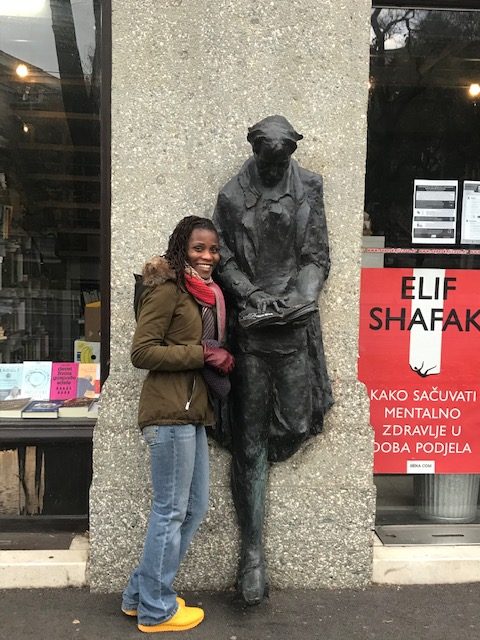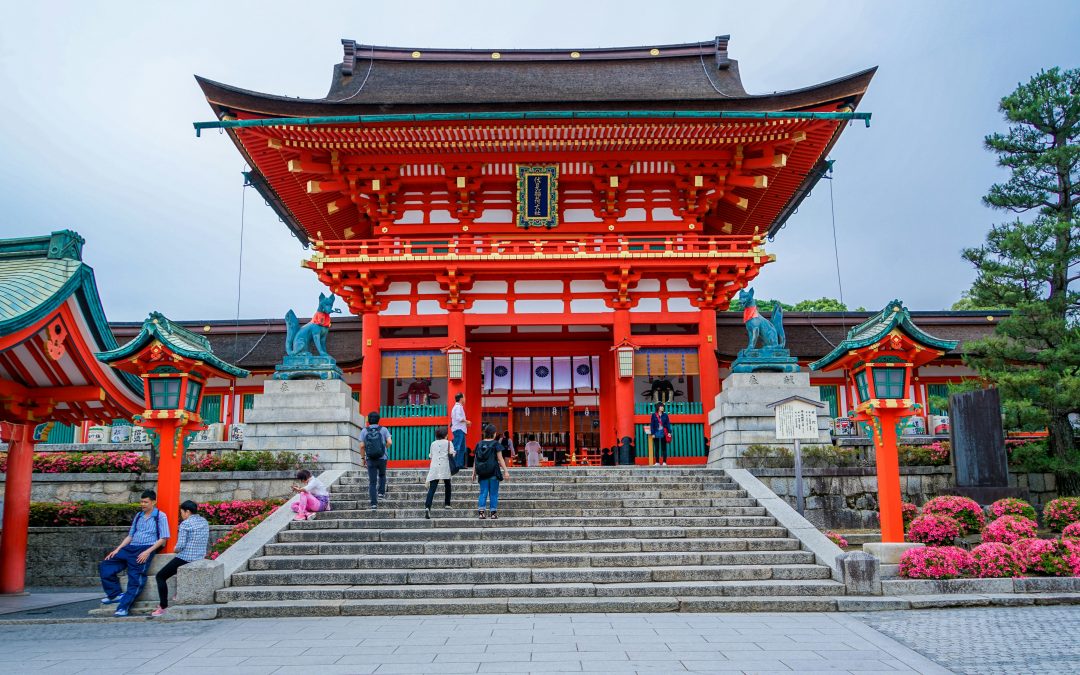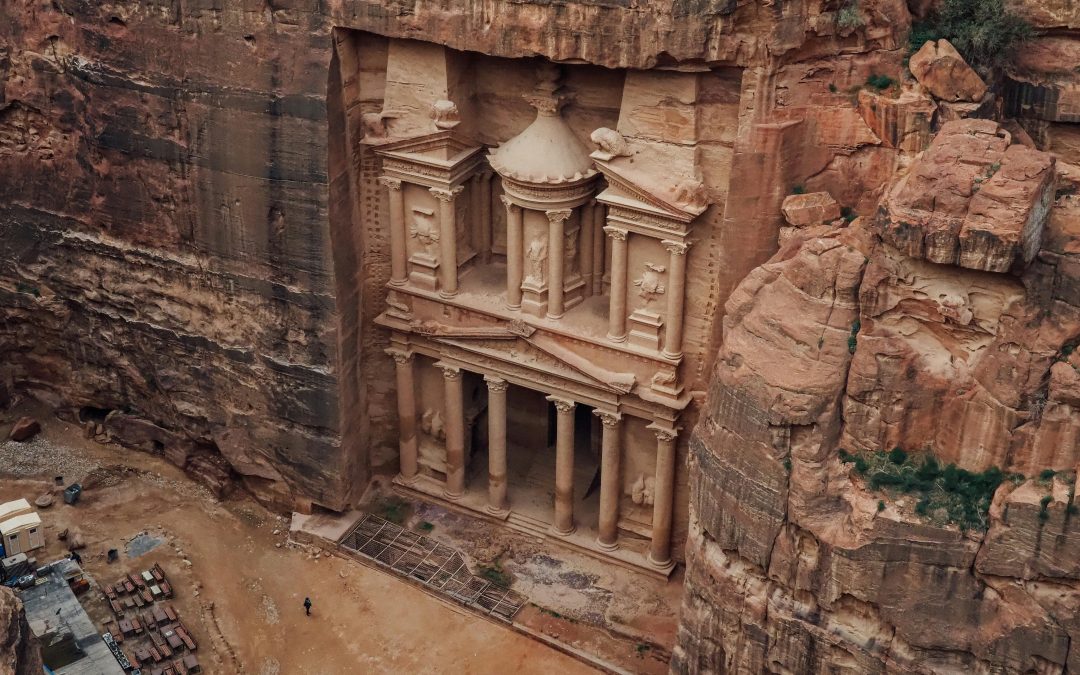
PETRA - Billets et laissez-passer, itinéraires adaptés aux foules, accès par l'arrière et accessibilité (sans perdre la magie)
Même si vous avez vu un millier de photos, la première fois que le Siq vous libère dans la lueur rose du Trésor est un choc. Petra n'est pas qu'une façade ; c'est une ville de 60 kilomètres carrés de montagnes, de wadis et d'espaces rituels qui récompense quiconque est prêt à marcher un peu plus loin et à planifier un peu plus intelligemment. En 2025, cela signifie qu'il faut comprendre la billetterie (et le Jordan Pass), chronométrer sa course dans le Siq, emprunter des sentiers moins connus et voyager de manière à honorer les communautés bédouines qui gèrent toujours cet endroit.
1) Petra en un coup d'œil - ce qui a changé, ce qui n'a pas changé
Les fondamentaux sont stables: Petra reste ouverte toute l'année avec billets pour visiteurs hébergés au prix de 50 JOD (1 jour), 55 JOD (2 jours) et 60 JOD (3 jours), tandis que les excursionnistes non hébergés (ceux qui ne dorment pas en Jordanie la nuit précédente) payer 90 JOD pour une journée. L'entrée est gratuite pour les enfants de moins de 12 ans pendant la journée. “Petra by Night”reste une expérience distincte, optionnelle et payante. Ces prix et catégories sont fixés par la Petra Development & Tourism Region Authority (PDTRA) et affichés sur le site internet de la ville de Petra. officiel Visite de Pétra page d'accueil.
Le laissez-passer de Jordanie a encore du sens pour la plupart des visiteurs internationaux séjournant trois nuits ou plus dans le pays : elle regroupe les entrées à Plus de 40 sites (dont Petra) et dispense du droit de visa pour une entrée unique, Le ministère du Tourisme propose trois niveaux selon que vous souhaitez passer 1, 2 ou 3 jours à Petra. Les prix et les inclusions sont indiqués sur le site officiel du ministère du tourisme, à l'adresse suivante Col du Jourdain portail.
Billetterie en ligne s'est améliorée : Le programme PDTRA PetraPass vous permet d'acheter à l'avance des billets officiels datés (utile pendant les semaines de pointe et pour les itinéraires structurés). Vous pouvez toujours acheter sur place, mais le préachat réduit l'incertitude et les files d'attente aux dates les plus populaires.
L'aide à la mobilité est plus claire: Les “Club cars” (voiturettes de golf) circulent sur des segments fixes (par exemple, Visitor Centre ↔ Treasury) moyennant un tarif et un horaire affichés, ce qui permet d'accéder à certaines parties de Petra. plus accessible pour les voyageurs à mobilité réduite ; les détails et les tarifs sont indiqués sur la page des tarifs.
2) Les coûts, les laissez-passer et ce qu'il faut acheter (sans surpayer)
Billets (entrée de jour)
- Hébergement des visiteurs (dormir au moins une nuit en Jordanie avant la visite) :
1 jour 50 JOD, 2 jours 55 JOD, 3 jours 60 JOD. - Visiteurs d'un jour non hébergés (par exemple, fly-in/fly-out ou pass-through) : 90 JOD (1 jour).
- Enfants de moins de 12 ans: gratuit pendant les heures de clarté.
- Guide et extrasLes tarifs d'orientation officiels existent ; ils sont facultatifs. club car Les segments sont disponibles aux tarifs affichés ; “Petra by Night” est un service d'information en ligne. billet séparé non couverts par la carte journalière.
Jordan Pass (qui devrait l'obtenir)
- Si vous prévoyez de rester ≥3 nuits en Jordanie et visiter d'autres sites que Petra (par exemple Jerash, Wadi Rum, la citadelle d'Amman), les Col du Jourdain généralement économise de l'argent et simplifie l'entrée. Choisissez la version pass qui comprend 1/2/3 jours Petra en fonction de votre plan ; il est également dispense de frais de visa si vous remplissez les conditions requises.
Achat en ligne ou sur place
- PetraPass (PDTRA) est la officiel Vous pouvez également acheter des billets au centre d'accueil des visiteurs si vous souhaitez plus de flexibilité. Pour les semaines de pointe (vacances de printemps et d'automne), il est préférable d'acheter les billets à l'avance.
Résultat:
- Courts séjours en Jordanie (≤2 nuits) centré uniquement sur Petra → Acheter uniquement le billet pour Petra (Dans ce cas, le passeport jordanien ne dispense pas du visa).
- Voyages plus longs (≥3 nuits) et les tournées multi-sites → Col du Jourdain est généralement la meilleure solution. Confirmez les jours exacts de Petra que vous devez inclure.
3) La journée à Petra - comment chronométrer le Siq, éviter les foules et avoir de l'énergie pour le monastère
Le matin (06:00-10:30) : Silence et lumière latérale
- 06:00-07:00 portes : entrez tôt pour une Siq tranquille et le Trésor toujours en passage de l'ombre à la lumière-magique pour la photographie.
- Continuez à avancer après le Trésor. La plupart des visiteurs s'arrêtent ici ; si vous appuyer sur vers le La rue des façades et théâtre, Vous posséderez la ville tandis que d'autres s'empileront à la première révélation.
En milieu de journée (10h30-14h30) : Chaleur et dispersion
- C'est le moment où la chaleur et la foule sont les plus fortes. Profitez-en pour explorer grandes zones (la rue à colonnades, Qasr al-Bint) ou chercher détours ombragés (escaliers de Wadi Farasa, le jardin Triclinium). Sauvegarde montées raides pour plus tard.
De l'après-midi au coucher du soleil (de 14h30 à la fermeture) : Grimper et briller
- Commencer le Ascension du monastère (Ad-Deir) après 15:00. Les plus de 800 étapes sont ombrées dans les sections, et lumière tardive fait rougir Ad-Deir. Les cafés situés près du sommet offrent du thé à la menthe et permettent de souffler un peu.
- Retour par l'intermédiaire du Panorama du monastère des belvédères offrant une vue sur le plateau d'Ed-Deir, semblable à celle d'une caldeira.
Pourquoi cela fonctionne-t-il ?: le début du Siq vous donne la solitude ; le mi-journée est destiné aux grands espaces et à l'ombre ; fin d'après-midi vous met sur la Monastère alors que la plupart des visiteurs sont déjà en train de sortir.
4) Trois itinéraires qui attirent les foules (choisissez-en un - ou cumulez-les sur 2 ou 3 jours)
Route A - “Trésor à l'abri, monastère à l'abri” (classique, 1 longue journée)
- 06:00-07:00: Entrer ; Siq → Trésorerie révéler ; seulement de brèves photos.
- Trésor → Rue des façades → Théâtre → Rue à colonnades (boucle fluide ; pause à Qasr al-Bint).
- Déjeuner tardif dans le bassin.
- 15:00+: Grimper le Monastère marches ; thé au sommet ; continuer jusqu'à une point de vue élevé pour le dernier feu orange de la façade.
- Sortez avec le heure bleue l'éclat dans le Siq.
Route B - “Hauts lieux et cours cachées” (amateurs d'architecture, 1 journée complète)
- Trésor → coupe à la Tombes royales (Urne, Soie, Corinthien) tandis que la foule matinale s'agite encore au Trésor.
- Wadi Farasa à la boucle Jardin Triclinium et Tombe du soldat romain-Des espaces silencieux et sculpturaux avec des ombres profondes.
- L'après-midi, ascension du Haut lieu du sacrifice; descendre par le Wadi al-Farasa escalier (moins utilisé) pour retourner dans le bassin.
Route C - “Monastère à porte dérobée + sortie en douceur” (billet de 2 jours recommandé)
- Transfert le matin à Petite Pétra (Siq al-Barid) et randonnée sur le chemin du retour jusqu'au plateau du Monastère (autorisé avec l'accès actuel - à confirmer sur place car les contrôles des sentiers et les liaisons 4×4 vers le point de départ du sentier peuvent changer). Ce sentier évite la ré-escalade l'escalier standard et vous place à Ad-Deir avec moins de personnes.
- Après avoir exploré les Monastère descendre l'escalier principal jusqu'au bassin, passer l'après-midi parmi les colonnades, sanctuaires et cours ombragées, puis marcher sur le Siq au crépuscule.
Remarque : La logistique des itinéraires de retour peut varier en fonction des travaux de conservation et de la gestion locale ; vérifiez toujours la situation actuelle auprès de la PDTRA ou des guides agréés à Wadi Musa avant de vous engager. L'itinéraire Visiter Petra et le personnel du PDTRA au centre d'accueil sont vos sources autorisées pour les autorisations de sentiers et les liens de transport les plus récents.
5) “Petra by Night” - quand cela vaut-il la peine ?
“Petra by Night”(généralement trois soirs par semaine ; l'horaire varie) est non inclus dans les billets de jour ou le Jordan Pass ; il nécessite une billet séparé achetés sur place ou par l'intermédiaire de vendeurs agréés. Vous marchez dans le Siq éclairé à la bougie jusqu'au Trésor, vous vous asseyez sur des nattes, vous sirotez un thé et vous écoutez Flûte bédouine dans le cadre d'un ciel étoilé si vous avez de la chance avec le temps.
Pour : l'atmosphère, les récits et la rare chance de se trouver dans le Siq après la tombée de la nuit.
Cons : Il peut y avoir beaucoup de monde, les photographies sont limitées, le Trésor lui-même est non éclairéAttendez-vous à des silhouettes et à la lueur des bougies, et non à un éclairage de studio.
Conseil: Si vous avez déjà vu le Trésor à l'aube, Petra by Night devient alors un élément d'ambiance supplémentaire plutôt qu'un incontournable. Si vous disposez de peu de temps et que la soirée est fraîche ou venteuse, donnez la priorité à la visite de Petra by Night. exploration de la lumière du jour.
6) Accessibilité et gestion de l'énergie - voitures de club, conduite et rythme réaliste
Petra implique longues distances plus pierre irrégulière et ascensions par paliers. Si vous ou un membre de votre groupe avez une mobilité réduite ou si vous souhaitez simplement économiser de l'énergie pour les moments forts :
- Voitures de club: PDTRA fonctionne voitures de club sur des segments définis (par exemple, Centre d'accueil des visiteurs ↔ Trésorerie), avec prix fixes et la capacité. Elles ne pas vont partout, mais ils suppriment une grande partie de l'approche. Les horaires et les tarifs sont affichés officiellement.
- Options équestres guidées: Les manutentionnaires locaux offrent âne ou cheval sur certains chemins. N'utiliser que autorisé Il convient de respecter les limites de poids et d'éviter les descentes abruptes afin de minimiser le stress des animaux et l'érosion des chemins.
- Le rythme: Plan micro-repos à l'ombre ; porter électrolytes; usure chaussures à semelles antidérapantes. Petra n'est pas une question de précipitation, c'est une question de placement-où vous vous trouvez lorsque la lumière frappe.
7) Une photographie qui respecte le lieu (et qui reste étonnante)
- L'aube du SiqLes règles relatives aux trépieds changent : lorsqu'elles sont autorisées, les trépieds sont déployés. les objectifs rapides (35/50mm) et ISO élevé pour l'incandescence avant le soleil. Gardez les voies libres ; les gardes forestiers vous demanderont de vous déplacer si vous bloquez la circulation.
- Trésorerie: le célèbre balcon supérieur L'angle se trouve sur un sentier de falaise sensible ; attention panneaux de fermeture et orientation locale-Ne jamais sauter les clôtures pour obtenir un tir.
- Monastère: le point de vue nord-ouest dernière lumière ; apportez une télé (85-135mm) pour une décharge comprimée.
- Nuit: Petra by Night, c'est plus que humeur que les détails, se pencher sur les silhouettes, exposer pour le champ de bougies.
8) Nourriture, eau et toilettes (la réalité sur place)
- L'eau: acheter sur le site Centre d'accueil des visiteurs et dans le bassin, mais transporter plus que vous ne le pensez (chaleur sèche + étapes).
- AlimentationLes tentes à thé et les cafés simples existent dans les centres-villes ; pensez à faire vos valises. snacks salés pour maintenir les électrolytes.
- ToilettesLes installations sont situées à proximité de nœuds clés (centre d'accueil des visiteurs, bassin/zone de restauration, environs du monastère) et sont pas à chaque tombe ; prévoyez des pauses avant les longues ascensions.
- DéchetsLes enfants de l'école doivent être en mesure d'emporter tout ce qu'ils apportent ; ils doivent laisser Petra plus propre qu'ils ne l'ont trouvée.
9) Comment se rendre sur place, où se loger et combien de temps rester ?
Base à Wadi Musa (ville située à la porte de Petra) pour accès à pied au centre d'accueil des visiteurs. Les hébergements vont de l'auberge de base à l'hôtel haut de gamme avec des chambres d'hôtes. service de portage (utile pour les bagages dans les rues en pente). Visez 2 jours minimum ; 3 jours vous permet de superposer un itinéraire de retour, une boucle de High Place et un coucher de soleil au Monastère à un rythme humain.
Transport
- Depuis Amman: 3-4 heures en voiture/bus par la Desert Highway ; plus longtemps par la pittoresque King's Highway (cela vaut la peine si vous avez le temps de vous arrêter à Château de Shobak).
- Depuis Aqaba: ~2 heures en voiture (belle combinaison avec Wadi Rum avant/après Petra).
Combinaisons
- Wadi Rum d'abord pour le silence du désert → puis Petra pour le sublime urbain.
- Biosphère de Dana et Shobak constituent un parfait prélude à l'héritage et à la randonnée.
10) Voyage responsable à Petra - 10 façons d'être un hôte de choix
- Acheter officiel: billets via PDTRA/Visit Petra ou Col du Jourdain. Évitez les rabatteurs.
- Utiliser des guides agréésLe bureau officiel se trouve au centre d'accueil des visiteurs.
- Séjour de deux nuitsLa journée supplémentaire permet de réduire la pression sur un créneau horaire donné.
- Respecter les limitesLes façades ne doivent pas être escaladées ; les corniches fragiles et les toits des tombes ne sont pas des points de vue.
- Bien-être des animaux: choisir autorisé, bien entretenu les animaux ; éviter les surcharges ; dire non aux manipulateurs agressifs.
- Emballer/déplacerLes déchets : ne pas jeter de détritus ; réduire au minimum les matières plastiques.
- Hydratation et ombragemoins de sauvetages signifie moins de perturbations pour les gardes forestiers.
- Acheter BédouinLes visiteurs sont invités à découvrir des bijoux, du thé et de l'artisanat directement auprès des exposants. négociation équitable.
- S'habiller et agir dans le respect de la culture: La Jordanie est chaleureuse et conservatrice ; les pantalons et les shorts longs sont appréciés en ville.
- Étiquette photoles enfants : demandez avant de photographier les vendeurs ou les enfants ; déposez un petit achat ou un pourboire si vous avez passé du temps dans le camp de quelqu'un.
11) Deux itinéraires parfaits, prêts à être publiés (copier-coller)
A) Deux jours qui en paraissent quatre
Jour 1 - Axe d'émerveillement
- 06:30 entrer ; Siq → Trésorerie; 20 minutes pour les photos.
- Tombes royales tandis que les foules se pressent toujours au Trésor.
- Wadi Farasa et Jardin Triclinium (pierre froide, calme profond).
- Déjeuner tardif dans le bassin ; musée si ouvert.
- 16:00 grimper Monastère, Le soir, thé au sommet, puis dernière lumière depuis le point de vue en hauteur.
- Heure bleue sortie par le Siq.
Jour 2 - Hauts lieux + vie en bassin
- Haut lieu du sacrifice à 07h30 ; descente de la Wadi al-Farasa étapes.
- Marche lente à travers les rue à colonnades et Qasr al-Bint; étudier les chapiteaux et le pavage.
- Option : Pétra de nuit si les horaires sont compatibles ; sinon, nuit à Wadi Musa avec un Jordanien. mansaf dîner.
B) Monastère de l'arrière-porte + glisse à travers la ville (avec billet de 2 jours)
Jour 1 : Petite Petra transfert → back-route à Ad-Deir → escalier principal descente vers le bassin → s'attarder dans quartier du temple → sortie.
Jour 2 : L'aube du Siq pour le Trésor, Tombes royales balcons (à partir des terrasses légales), théâtre et rue à colonnades, Déjeuner tardif et visite du musée, Haut lieu si les jambes le permettent.
12) Petra avec des enfants, des personnes âgées, des photographes et des randonneurs (conseils ciblés)
Avec des enfants: Gamifier la journée“compter les esprits dans le rocher” dans le Siq, garder objectifs courts (Trésorerie → théâtre → observation de chameaux), horaire crème glacée corruption dans le Wadi Musa. Évitez l'escalier complet du monastère, à moins d'être de bons marcheurs ; choisissez une club car pour l'approche.
Avec les anciens: Fixer des priorités voitures de club pour le centre d'accueil des visiteurs ↔ jambe de trésorerie ; accent mis sur Tombes royales (proches l'un de l'autre) et le rue à colonnades (plus plat). Laissez l'ascension du Monastère aux plus forts.
Pour les photographes: Apporter Filtres ND pour les foules ; s'appuyer sur expositions longues au Trésor (si l'utilisation d'un trépied est autorisée pendant votre visite - les règles changent ; sinon, calez-vous). En début de journée lumière latérale sur les tombes royales fait chanter les orchestres de couleur ; le Monastère aime les lumières tardives et chaudes.
Pour les randonneurs: Ajouter le Jabal al-Madbah décants de faîtage et d'escaliers longs à Wadi al-Farasa; toujours emporter de l'eau supplémentaire et indiquer à un guide/hôte où l'on se rend.
13) Sécurité, saisons et climat
Quand partir ?
- Mars-Mai et Septembre-Novembre sont idéales : journées chaudes, matinées fraîches, bonne lumière.
- L'été (juin-août) peut être chaud; début précoce, plan a retraite de mi-journée à l'ombre ou aux cafés Wadi Musa, puis retour pour les montées tardives.
- L'hiver est vif ; de rares averses font briller le grès.
Pieds
- Le Siq et les pierres de la ville peuvent être poli et luisant de millions de pieds. Porté semelles antidérapantes; considérer un bâton de trekking léger (embout en caoutchouc) pour les descentes.
Urgences
- Des gardes forestiers sont présents ; des points de secours sont installés dans les principaux nœuds. La couverture mobile apparaît et disparaît avec les parois du canyon. cartes hors ligne et informez votre logement de votre plan.
14) “Combien dois-je laisser de pourboire ?” et autres questions pratiques
- Guides (privé, journée complète) : 15-25 JOD en fonction de la profondeur et de la taille du groupe.
- Conducteurs de voitures de clubun petit pourboire (1-3 JOD) est apprécié.
- Cafés/tentes à théPour résumer, achetez un petit souvenir si vous passez du temps à prendre des photos depuis la terrasse de quelqu'un (avec l'autorisation de ce dernier).
- Argent liquide: Apporter JOD en petits billets ; certains commerçants acceptent les cartes mais ne s'en servent pas dans les profondeurs du site.
15) FAQ
Combien coûtera Petra en 2025 ?
Les visiteurs hébergés paient 50 JOD (1 jour), 55 JOD (2 jours), 60 JOD (3 jours); les excursionnistes non hébergés payer 90 JOD pour 1 jour. Les enfants de moins de 12 ans bénéficient de la gratuité à la lumière du jour. “Petra by Night” est séparer. Prix officiels : Visiter Petra.
Le Jordan Pass inclut-il Petra et le visa ?
Oui - Le passeport pour la Jordanie comprend Petra (choisissez les variantes 1/2/3 jours) et dispense du droit de visa pour une entrée unique si vous séjour ≥3 nuits en Jordanie. Détails et prix sur le site laissez-passer officiel pour la Jordanie portail.
Puis-je acheter des billets en ligne ?
Oui. L'avis de la PDTRA PetraPass permet d'acheter à l'avance en ligne des billets officiels datés ; vous pouvez également les acheter au centre d'accueil des visiteurs.
Petra by Night est-il inclus dans le billet journalier ou le Jordan Pass ?
Non. Il faut un billet séparé; Les enfants de moins de 10 ans sont généralement admis gratuitement. Vérifiez les horaires au centre d'accueil des visiteurs à votre arrivée.
Petra est-elle accessible aux voyageurs à mobilité réduite ?
En partie. L'approche est longue et les surfaces sont irrégulières, mais voitures de club Les restaurants fonctionnent sur certains segments (Visitor Centre ↔ Treasury) à des prix affichés, et il y a des zones plus plates autour de la rue à colonnades. Prévoir des pauses et de l'ombre.
Combien de jours dois-je passer ?
Deux jours minimum ; trois si vous voulez des itinéraires de retour et des points de vue sur le coucher du soleil sans vous presser.
16) Des sources crédibles auxquelles vous pouvez vous fier
- Visiter Petra - Tarifs officiels et notesLe site web de Petra by Night : la liste des catégories de billets et de Petra by Night, la disponibilité des voitures et les heures d'ouverture font autorité.
- Passeport pour la Jordanie - Official: niveaux de produits, prix, conditions d'exemption de visa (≥3 nuits), et attractions incluses dans tout le pays.
- PDTRA PetraPassportail officiel de prévente de billets ; à utiliser pour obtenir des billets datés en période de pointe.

Écrit par Kariss
Plus de cette catégorie

KYOTO
Kyoto n'est pas un parc à thème, c'est une capitale vivante de l'artisanat, de la foi et de la vie de quartier. En 2025, vous ferez un voyage extraordinaire si vous tenez compte des saisons, si vous vous déplacez tôt ou tard et si vous respectez l'étiquette de la ville, en particulier à Gion, afin que les habitants, les artisans et les voyageurs puissent partager les mêmes rues avec aisance.

KYOTO
Kyoto n'est pas un parc à thème, c'est une capitale vivante de l'artisanat, de la foi et de la vie de quartier. En 2025, vous ferez un voyage extraordinaire si vous tenez compte des saisons, si vous vous déplacez tôt ou tard et si vous respectez l'étiquette de la ville, en particulier à Gion, afin que les habitants, les artisans et les voyageurs puissent partager les mêmes rues avec aisance.

KYOTO
Kyoto n'est pas un parc à thème, c'est une capitale vivante de l'artisanat, de la foi et de la vie de quartier. En 2025, vous ferez un voyage extraordinaire si vous tenez compte des saisons, si vous vous déplacez tôt ou tard et si vous respectez l'étiquette de la ville, en particulier à Gion, afin que les habitants, les artisans et les voyageurs puissent partager les mêmes rues avec aisance.
0 Commentaires
Notre lettre d'information


0 commentaires